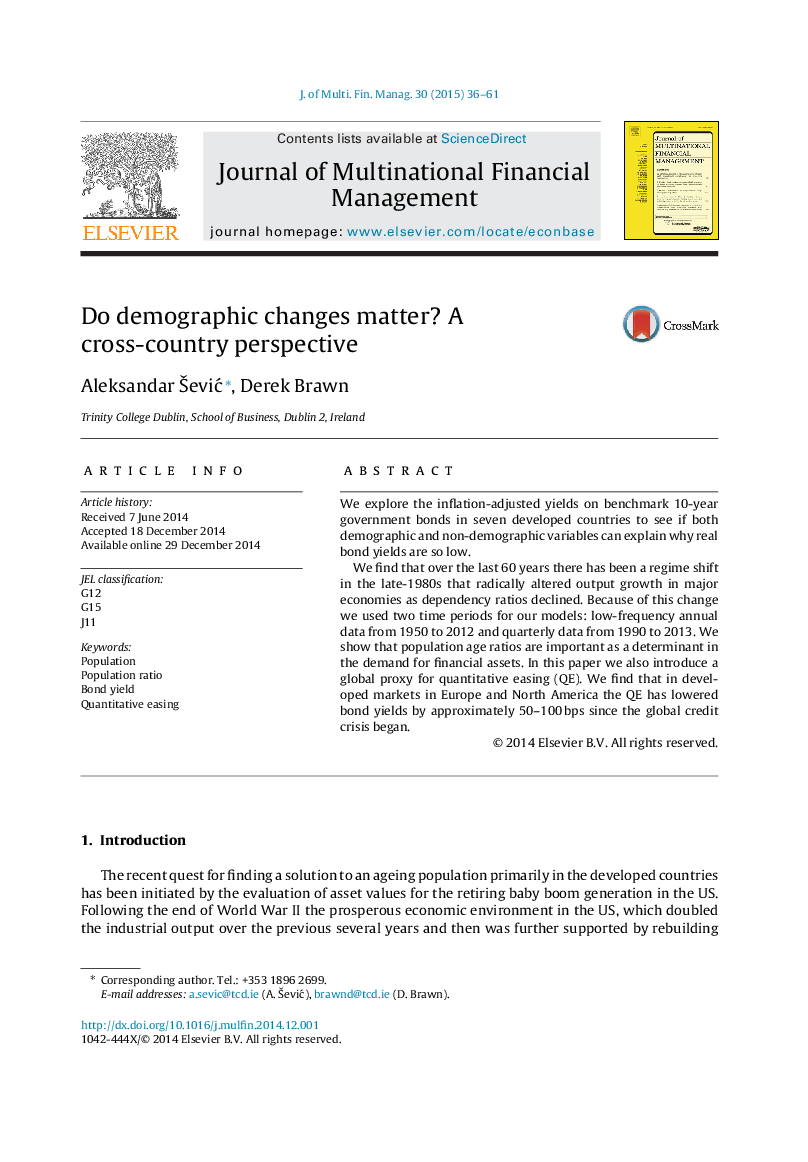| Article ID | Journal | Published Year | Pages | File Type |
|---|---|---|---|---|
| 967845 | Journal of Multinational Financial Management | 2015 | 26 Pages |
•We examine yields on 10-year government bonds in seven developed countries.•We use both demographic and non-demographic variables to explain real bond yields.•Over the last 60 years there has been a regime shift that occurred in the late-1980s.•In estimations we use low-frequency annual data and quarterly data.
We explore the inflation-adjusted yields on benchmark 10-year government bonds in seven developed countries to see if both demographic and non-demographic variables can explain why real bond yields are so low.We find that over the last 60 years there has been a regime shift in the late-1980s that radically altered output growth in major economies as dependency ratios declined. Because of this change we used two time periods for our models: low-frequency annual data from 1950 to 2012 and quarterly data from 1990 to 2013. We show that population age ratios are important as a determinant in the demand for financial assets. In this paper we also introduce a global proxy for quantitative easing (QE). We find that in developed markets in Europe and North America the QE has lowered bond yields by approximately 50–100 bps since the global credit crisis began.
